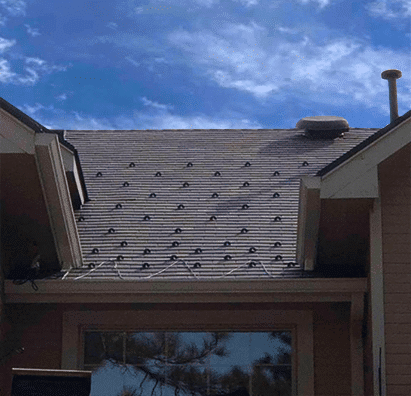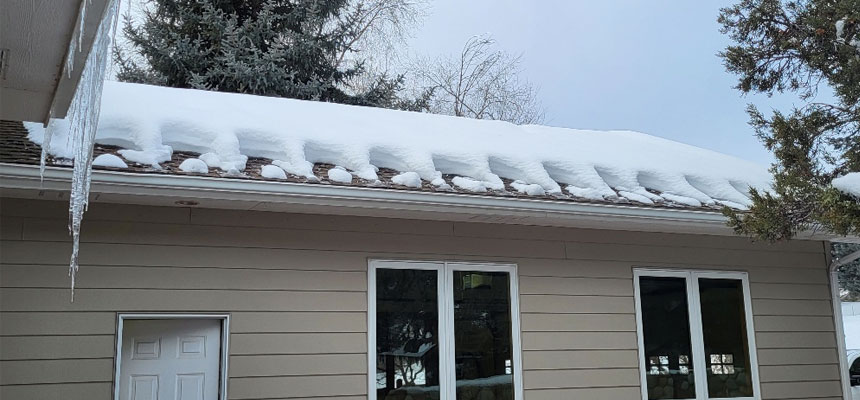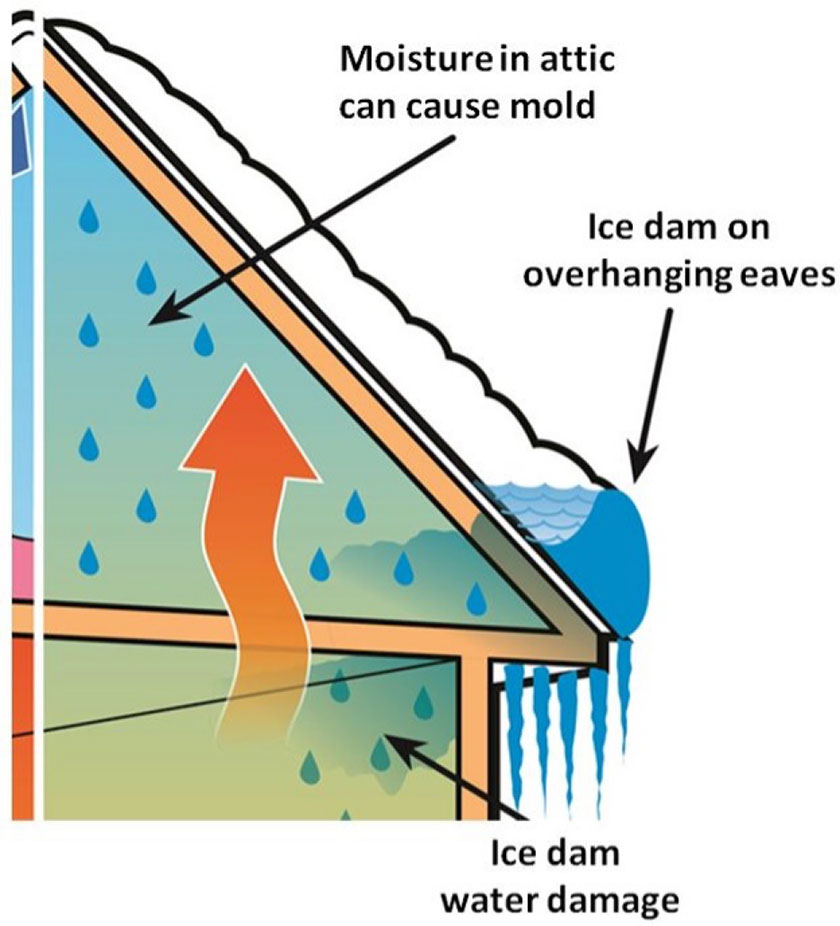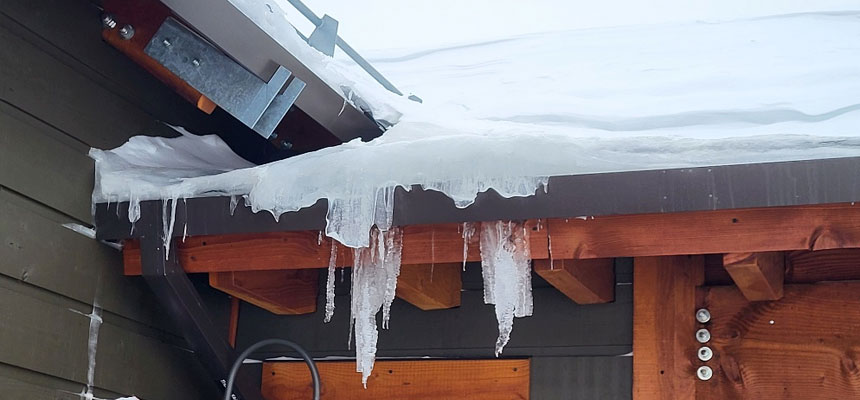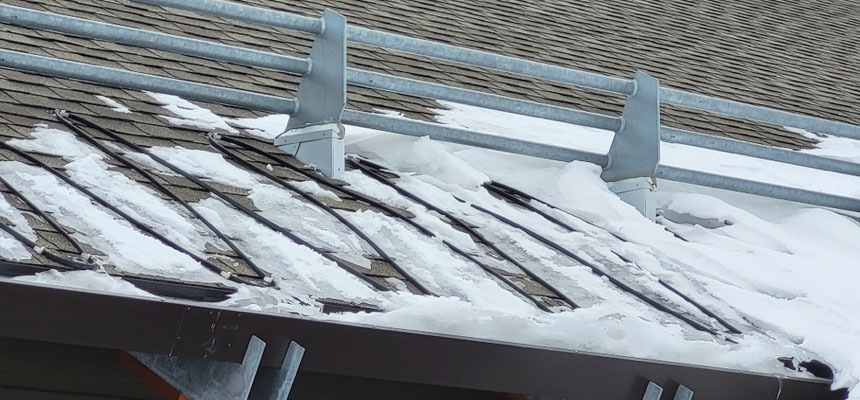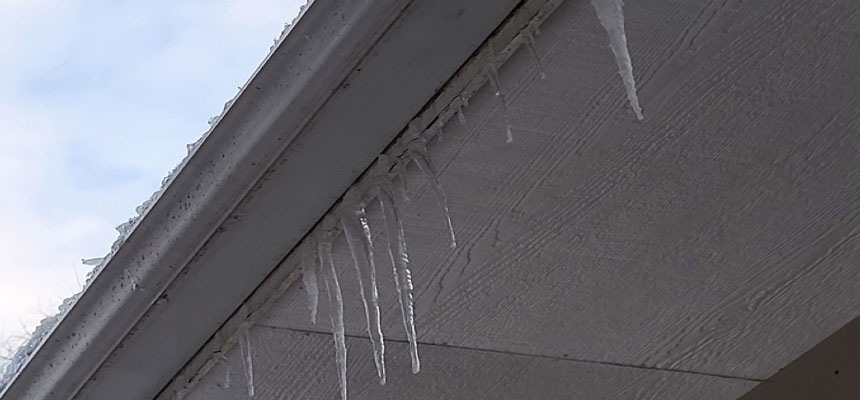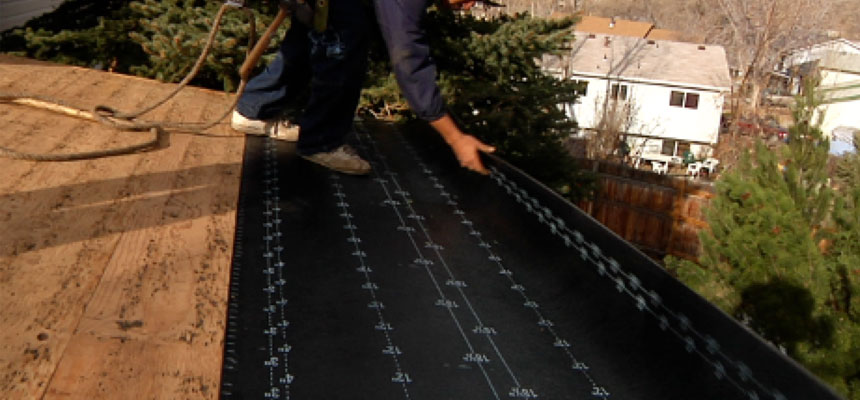Heavy, Wet Snow on Roofs: What You Need To Know
Winter is here and Spring is around the corner and with its arrival comes greater chances of heavy, wet snow. While a blanket of snow may look picturesque, it can cause serious damage to your home or bodily harm.
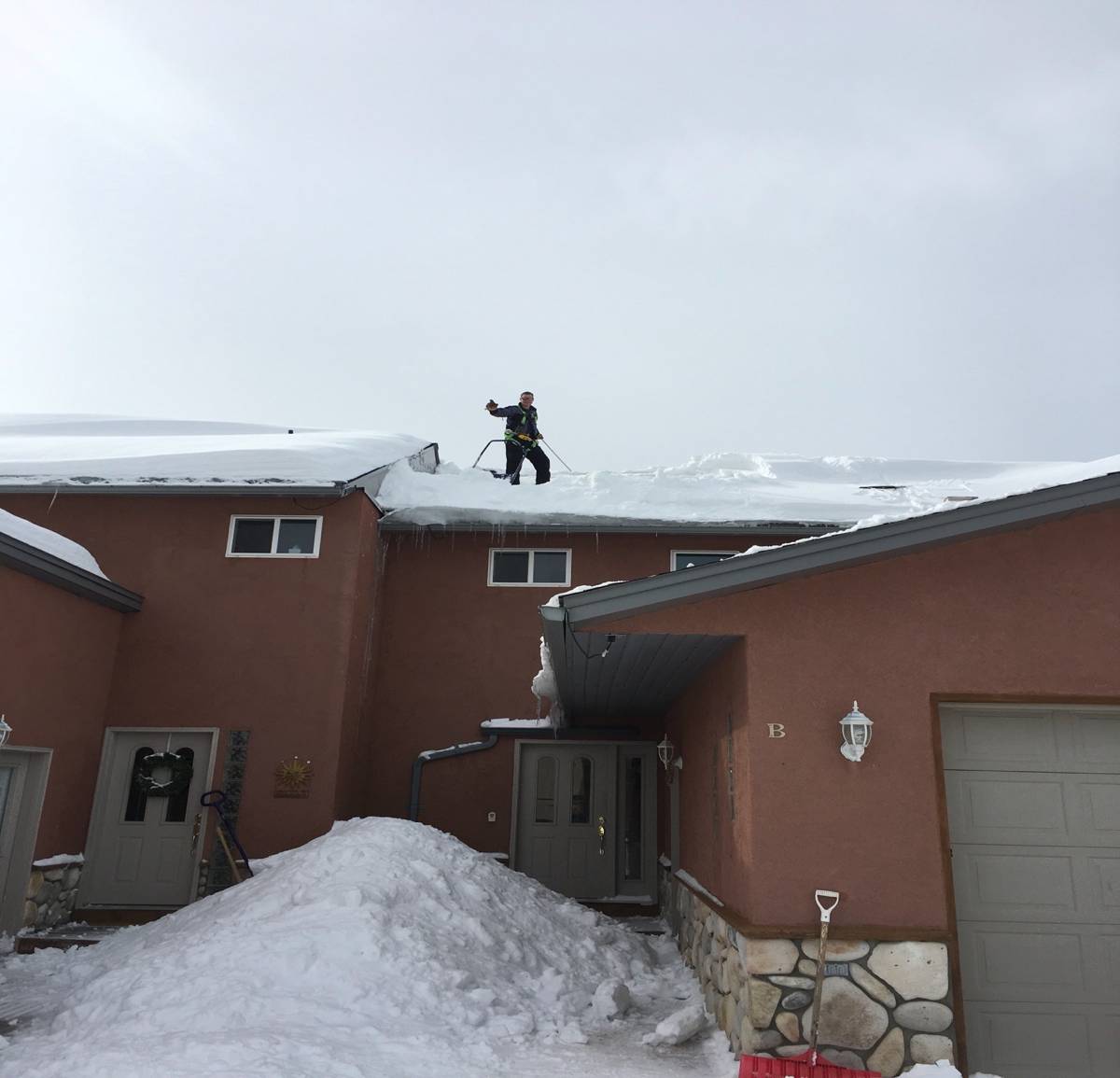
Why is heavy, wet snow dangerous for roofs?
The weight of heavy, wet snow is the biggest concern for roofs. As the snow accumulates on your roof, the weight can build up quickly. In the Spring when the snow is wet and heavy, it can put a lot of stress on your roof structure. This can cause the roof line to sag or even collapse. which is a serious safety hazard and will cause costly repairs.
In addition, heavy, wet snow can cause damage to your gutters, shingles, and other roofing materials. When snow melts, it can seep into cracks and crevices, causing water damage to your roof and even making its way into your home. This is what we refer to in roofing as ice dams. Ice damming occurs when snow on the roof melts and refreezes at the edge of the roof. This can cause water to back up and seep into the home through the roof or soffits, leading to water damage. For more about preventing ice dams check out our Ice Dams blog: https://www.excelroofing.com/ice-dams-how-to-prevent-ice-dams-protect-your-roof/
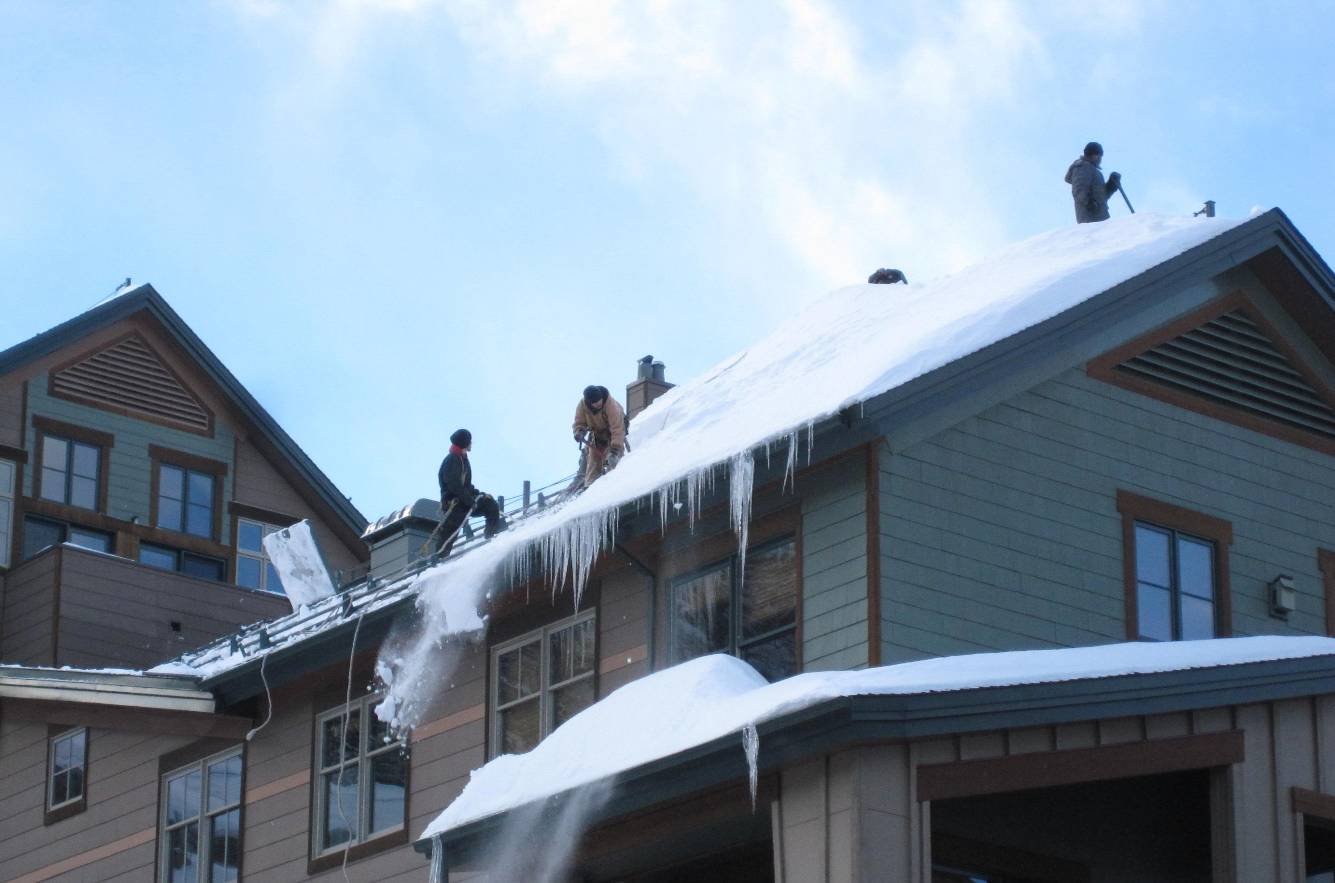
Safety
Heavy, wet snow is not only dangerous for your homes’ health, but also your personal health. Every year people die or are severely injured from snow falling off roofs. Metal roofs are particularly dangerous. Heavy, wet snow easily slides off metal roofs due to no friction between the roof and the snow. Snow guards are highly recommended by Excel Roofing for metal roofs in areas that receive a lot of snow.
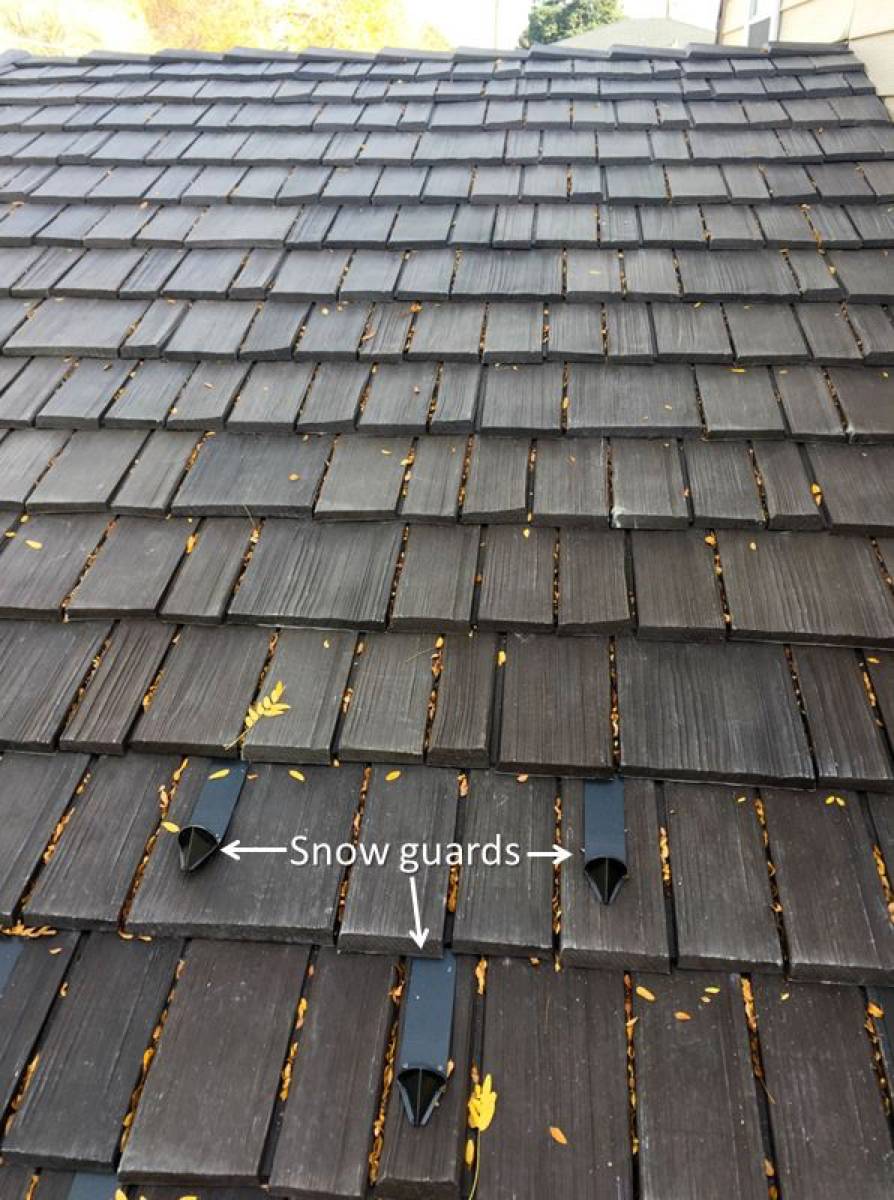
What can you do to prevent heavy, wet snow damage to your roof?
- Clearing snow off your roof can help reduce the risk of damage. You can use a snow rake to remove snow from your roof or hire Excel Roofing to do the job for you. Excel Roofing does not recommend getting on your roof with snow or ice present.
- Snow guards are most common for tile, metal, and composite roofs but can be installed on steep asphalt roofs. The guards are installed to create friction and keep the snow on your roof until is safely melts. Heat cable is installed on all roof types. The heat cable will melt the snow and ice where it builds up which reduces strain on the roof structure.
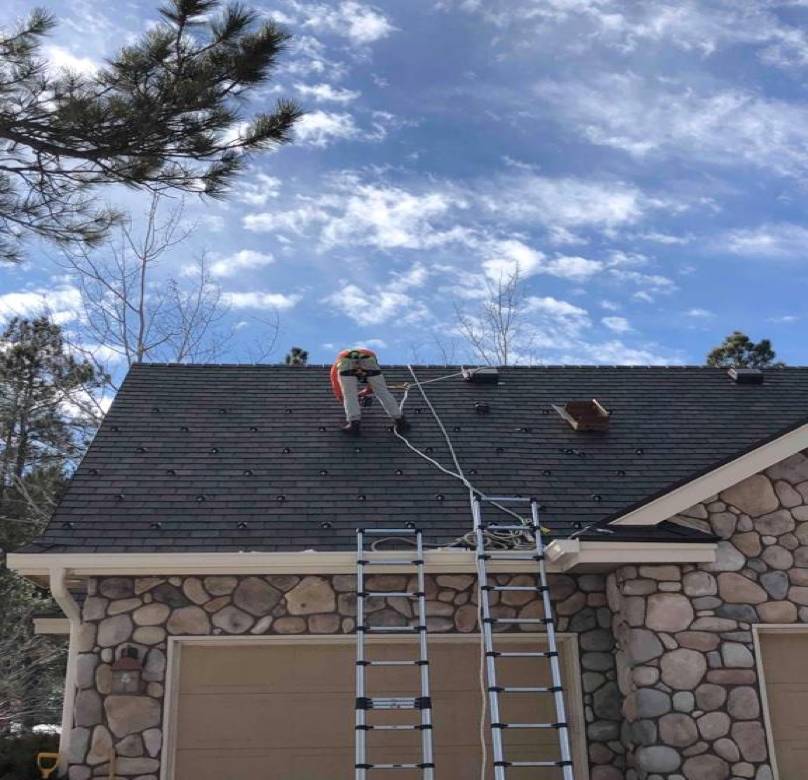
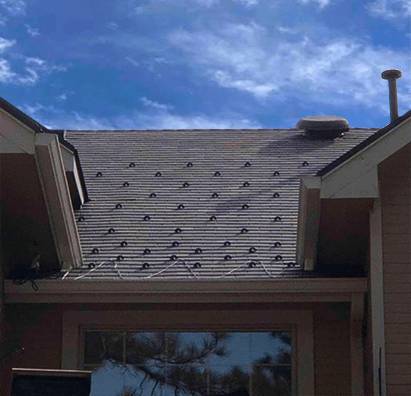
- Regular roof maintenance, such as cleaning gutters and checking for damage, can prevent ice dams from forming and mitigate future damage. This is especially important if you live in an area that gets a lot of snow. Keep an eye out for any signs of sagging or cracking and act immediately if you notice any problems. Click HERE for a free roof inspection.
By taking these steps, you can help keep your roof in top condition and protect your home from heavy, wet snow damage. Call Excel Roofing for any roofing questions and concerns. 303.761.6400

